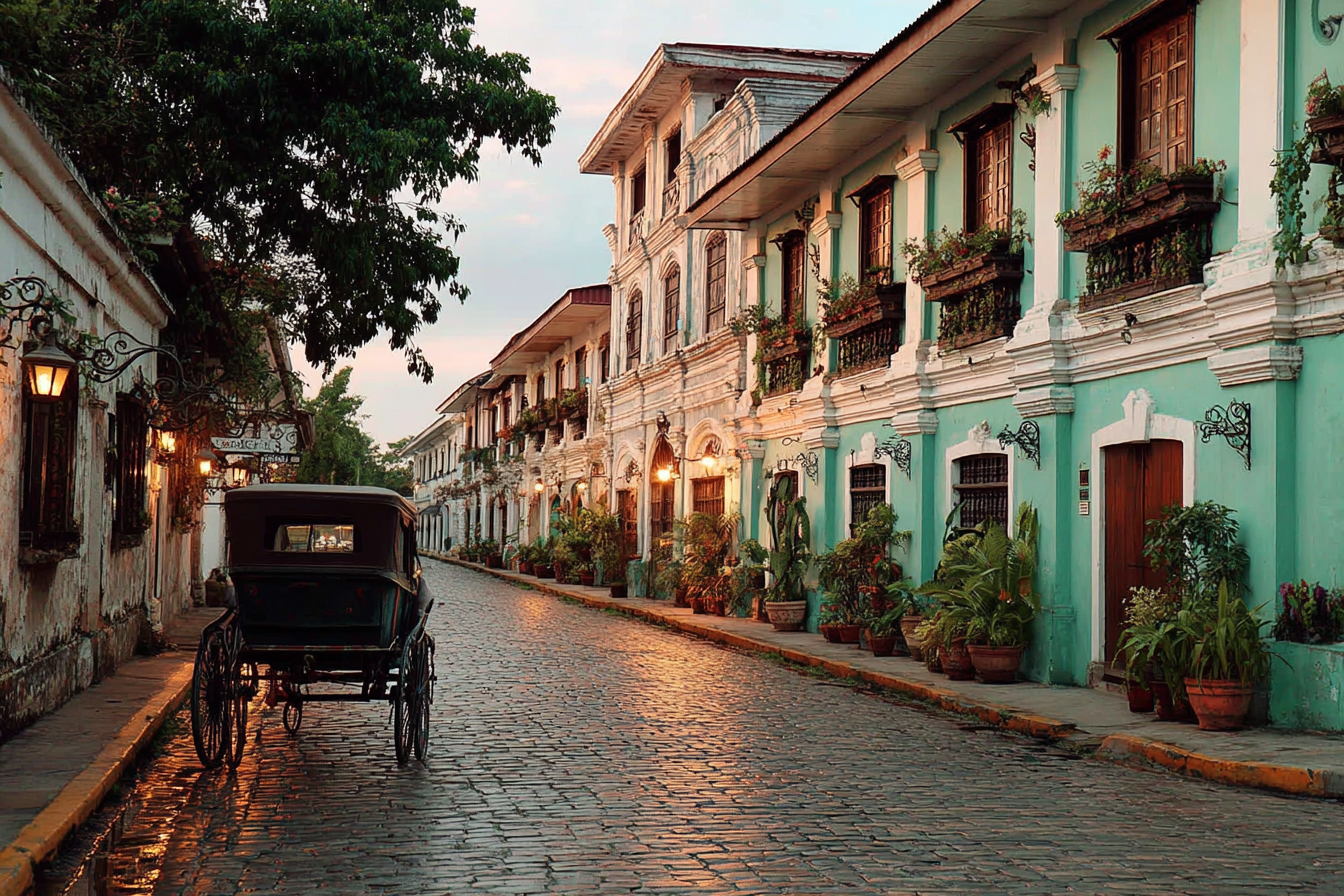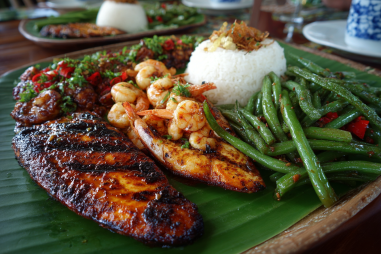Stepping into Vigan is like stepping back in time. This enchanting city, located in the province of Ilocos Sur in the Philippines, is renowned for its well-preserved Spanish colonial and Asian architecture, cobblestone streets, and rich cultural heritage. Vigan’s unique blend of East and West has earned it a special place on the global stage, attracting travelers who want to experience a slice of history that’s been beautifully maintained over centuries. If you’re a history lover or simply curious about cultural treasures, Vigan’s heritage sites offer a captivating journey through time.
UNESCO World Heritage Designation
Vigan was officially designated as a UNESCO World Heritage City in 1999, a recognition that highlights its outstanding universal value. This prestigious title is awarded to places that are considered cultural or natural treasures of global significance, and Vigan’s historic town perfectly fits this criterion. The city showcases an exceptional fusion of cultural elements derived primarily from Spanish colonial rule but enriched with local Ilocano and Chinese influences. The UNESCO designation not only affirms Vigan’s historical importance but also encourages preservation efforts to maintain its distinctive character for generations to come.
Key Heritage Landmarks
When exploring Vigan, several iconic landmarks stand out as must-visit destinations that offer a glimpse into the city’s glorious past. Here are some of the finest heritage sites that you shouldn’t miss:
Calle Crisologo
Perhaps the most famous street in Vigan, Calle Crisologo is a picturesque cobblestone lane lined with centuries-old ancestral houses. These structures, built in the traditional Spanish colonial style with capiz shell windows, clay tile roofs, and wrought iron grills, evoke a nostalgic charm that’s hard to resist. Walking along Calle Crisologo feels like traveling back to the 18th century, especially when horse-drawn carriages (kalesas) add to the old-world ambiance. The street is also filled with quaint souvenir shops, cafes, and local artisans, making it a lively spot to immerse yourself in culture and heritage.
St. Paul’s Metropolitan Cathedral
Also known as Vigan Cathedral, St. Paul’s Metropolitan Cathedral is a striking symbol of the city’s religious heritage. Constructed in the early 18th century, this Baroque-style church showcases massive buttresses, intricate stone carvings, and beautiful stained glass windows. It stands as a testament to the skill and artistry of the time, having survived earthquakes and wars with remarkable strength. Inside, you can admire magnificent altars and relics, and witness the spiritual heart of the Vigan community.
Bantay Bell Tower
Perched on a hill just outside the city proper, Bantay Bell Tower offers a panoramic view of Vigan and the surrounding landscape. Built in the late 16th century, this watchtower served a dual purpose—it was both a bell tower for the nearby Bantay Church and a fortress for spotting approaching enemies. The bell tower’s unique design and strategic location make it a fascinating site to explore, especially for history buffs and photographers looking for the perfect vantage point.
Historical Significance and Architectural Style
Vigan’s heritage sites are not just relics of an old era; they symbolize the fusion of different cultures and the resilience of a community. The architecture predominantly reflects Spanish colonial baroque styles adapted to local needs and materials. For example, the use of local adobe stones and bricks, wide spaces to accommodate tropical climates, and the inclusion of Chinese-inspired decorative elements reflect the diverse influences that shaped the city.
This architectural style also mirrors the socioeconomic history of the place—ranging from opulent mansions of wealthy landowners to modest houses of traders and artisans. The preservation of these buildings allows visitors to understand not only the aesthetics of the past but also the way people lived, worked, and interacted within this colonial town.
Practical Tips for Visiting Heritage Sites
To make the most of your visit to Vigan’s heritage sites, keep these practical tips in mind:
- Wear comfortable walking shoes. The cobblestone streets can be uneven, so suitable footwear helps you explore comfortably.
- Visit early in the morning or late afternoon. Avoid the midday heat, especially if you plan on walking extensively.
- Respect the heritage sites. Many of these places are protected, so avoid touching old walls or entering restricted areas.
- Bring cash. While some shops accept cards, many local vendors and tours operate on cash.
- Try local delicacies. Don’t miss tasting Vigan’s famous empanada and other Ilocano dishes as part of your cultural experience.
Guided Tour Options and Museums
If you prefer a more structured way of exploring Vigan’s heritage sites, consider joining a guided tour. Several local tour operators offer walking tours, kalesa rides, and cultural immersion experiences that provide valuable insights into the city’s history and lifestyle.
In addition to the landmarks, visiting the following museums enriches your understanding:
- Casa Museo Crisologo: This family museum showcases antique furniture, memorabilia, and documents related to the Crisologo family who played significant roles in Philippine politics and history.
- Vigan Heritage Village Museum: An interactive museum highlighting the daily lives, traditions, and crafts of Vigan’s residents through history.
- Pagburnayan Jar Factory: Experience the traditional pottery-making art, one of the oldest crafts in Vigan, by watching artisans at work or even trying it yourself.
Preservation Efforts and Cultural Festivals
Vigan’s charm owes much to continued preservation efforts by the local government, non-governmental organizations, and the community itself. Maintaining centuries-old structures in their original glory requires careful restoration and adherence to heritage guidelines. These efforts aim to balance modernization with conservation, ensuring Vigan remains an authentic heritage city amidst changing times.
Vigan also hosts vibrant cultural festivals that celebrate its history and people. One of the highlights is the Viva Vigan Festival held annually to commemorate the city’s foundation. The festival features street dancing, traditional music, colorful costumes, and parades that bring the heritage sites to life through joyous celebration. Attending such festivals is a wonderful way to participate in local culture while appreciating the city’s historical backdrop.
Why Vigan Heritage Matters
Visiting Vigan is more than sightseeing—it’s an opportunity to connect with a living history that continues to shape Filipino identity. The city’s heritage sites are physical links to past generations who built and nurtured this unique cultural mosaic. By preserving and valuing Vigan’s heritage, both locals and visitors contribute to the ongoing story of resilience, creativity, and unity.
Whether you wander down Calle Crisologo, admire the grandness of St. Paul’s Cathedral, or listen to the echoes from Bantay Bell Tower, you are partaking in a journey through time. Vigan invites you not only to observe but to experience the richness embedded in its streets and structures—a journey that leaves you inspired, knowledgeable, and deeply connected to the tapestry of human history.







